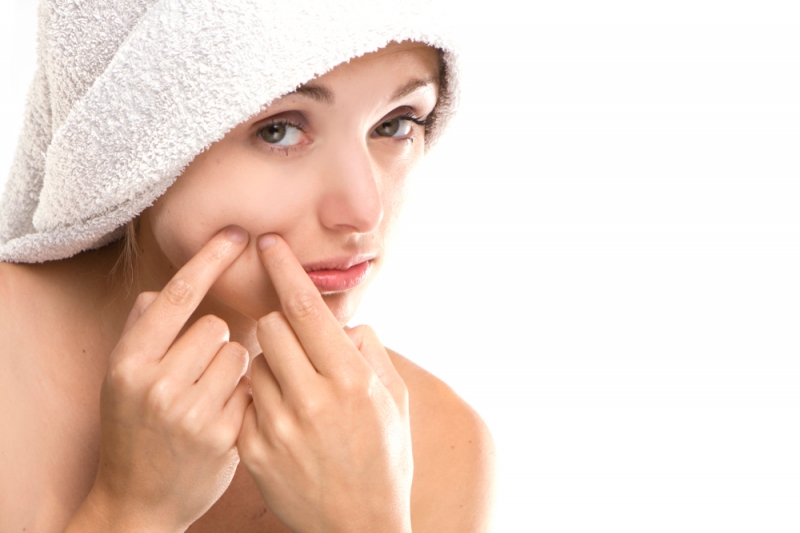 Acne has been around for thousands of years. Ancient Egyptians, Greeks, and Romans devised one of the first popular treatments: sulfur. Traditional approaches in Asia tended toward herbal skin care. Both are examples of natural skin care products that have been used through the ages, right up to the present.
Acne has been around for thousands of years. Ancient Egyptians, Greeks, and Romans devised one of the first popular treatments: sulfur. Traditional approaches in Asia tended toward herbal skin care. Both are examples of natural skin care products that have been used through the ages, right up to the present.
Causes of Acne
Many factors lead to acne. In adolescence it is due to an increase in testosterone, regardless of gender. Other hormones may also be involved. Generally such hormone imbalances diminish with maturity. However, they may reappear and cause acne repeatedly with menstrual cycles, pregnancy, and menopause.
The long-held belief that certain foods can cause acne has no clear supporting scientific evidence. Nevertheless, a high-glycemic load diet, especially high in sugar, seems to make it worse.
At the cellular level acne develops from blockages in the hair follicles. Keratin, the key structural protein that makes up the outer layer of skin, accumulates into a plug. This plug mixes with an overabundance of sebum, the normal oily substance secreted by pores to protect your skin from becoming dry and cracked.
In a perfect world, sebum travels up a follicle, carrying dead skin cells out through a pore. When the system gets clogged, eruptions made of dead skin cells, sebum, and keratin dot the skin. To make matters worse, this mixture often becomes infected with a bacterium called Propionibacterium acnes. Infection cause inflammation and redness.
Standard Treatments for Acne
The earliest approaches to treatment have not changed much over the centuries. Fighting excessive oiliness has been particularly popular. Sulfur, known by the ancients, is still to reduce skin oil, causing skin to dry and peel. Many natural skin care products still contain sulfur for this purpose. Sulfur often leads to drying, reddening, and a burning sensation.
Even harsher treatments are based on strong oxidants, which act like setting fire to skin. The two most common ones are benzoyl peroxide and salicylic acid. It is no surprise that they both cause skin irritation, reddening, and drying
Prescription treatments can include antibiotics, although these are more commonly used only for severe cases. Over time they have become less effective worldwide due to increasing resistance of P. acne’s to common antibiotics.
Herbal Skin Care
In contrast with the sledgehammer effects of standard treatment, natural skin care products for acne work more harmoniously with skin physiology. Worldwide every culture seems to have a history of using local plants for herbal skin care. In more recent times certain of these herbs have taken the stage as important ingredients for keeping skin healthy and vibrant in the face of acne. One of the many stars of the show is licorice root.
The science of herbal skin care often takes its lead from traditional uses of herbs. Medical uses of licorice root have been found to go back at least 4,000 years. Modern research has begun to show us why it has been such an important herb for so long.
In 2003 researchers at the Skin Research Institute in South Korea reviewed the therapeutic effects against acne of several Oriental herb extracts. They found that licorice root, among other herbs, has an anti-lipid forming effect, meaning an activity that reduces oil formation in the development of acne. This herb also showed a remarkable antibacterial effect against P. acnes. The scientists concluded by suggesting how important licorice root can be in preventing and treating acne lesions.
More recently, in 2012, researchers at Sree Vidyanikethan College of Pharmacy in India evaluated several herbs for their potential as anti-acne moisturizers. They discovered licorice root to be an important ingredient in an optimal formula. They also noted that its benefits include an ability to control bacterial infection, without any sign of skin irritation.
Licorice Root in Jadience Herbal Formulas
Traditional uses of formulas containing licorice root include skin cleansing and gels, which we now know reduces the buildup of excess sebum. This is a particularly important ingredient in the Jadience Cleansing Cream for Normal to Oily Skin is available at NaturalSkinRX.
Or, browse the Jadience Oily/Troubled Skin Care Treatment line as the All-Natural Acne Skin Treatment to not only prevent breakouts, but help repair your skin. And if you want to try out their Regimen to see how your skin responds, they have a Deluxe Sampling Travel Kit for Oily and Troubled Skin (good for up to 4-6 days of applications).




